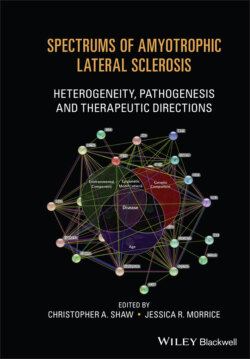Читать книгу Spectrums of Amyotrophic Lateral Sclerosis - Группа авторов - Страница 36
Stathmin‐2 (STMN2)
ОглавлениеThe loss‐of function hypothesis for TDP‐43 has led to the examination of transcripts that are dysregulated following TARDBP knockdown. In separate studies, TARDBP was silenced in human motor neurons derived from iPSC as well as in TARDBP variant carrier cell lines [69, 70]. The primary objective of both studies was to identify transcripts that showed significant expression differences after TARDBP depletion; while the overlap of transcripts between the studies has not been examined, both studies identified Stathmin‐2 (STMN2). The studies further show that certain TARDBP variants also cause a similar downregulation of STMN2 compared to unaffected controls. Moreover, an aberrant exon and subsequent truncation were observed in STMN2 transcripts following TARDBP silencing, further supporting the cryptic exon mechanism of TDP‐43 dysregulation in ALS.
As a component of microtubule dynamics, STMN2 adds to a group of genes implicated in the regulation of assembly and disassembly of tubulin (TUBA4A [71]) and movement of molecular cargo along microtubule networks (KIF5A [72, 73] and DCTN1 [71]). While no publications have shown variants in STMN2 associated with ALS, STMN2 dysregulation expands our knowledge about TDP‐43 binding pre‐mRNA transcripts in the nucleus. Both studies identified STMN2 as a TDP‐43 target using motor neuron cultures, demonstrating the necessity of specific cellular models.
